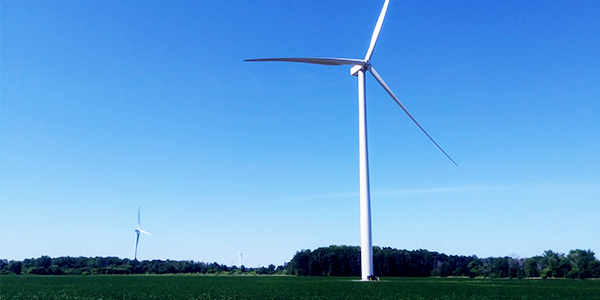By Amanda Durish Cook
CARMEL, Ind. — MISO’s grid can withstand major reliability risks even when renewables reach 40% of the generation mix, RTO staff said last week.
That finding represents a turnabout from a study last year that found the RTO would need to take significant steps to reinforce its grid to handle a jump from 30% to 40% renewable penetration. (See Study: MISO Grid Needs Work at 40% Renewables.) But it is now more confident about its ability to maintain reliability as renewable development intensifies.
“The challenge is a non-linear thing. There are certain points where it becomes more complex as you eat up some of the flexibility and capacity on the system. … There’s more megawatts of capacity needed on the system over time,” MISO Manager of Policy Studies Jordan Bakke said during a special workshop on the topic Wednesday.
MISO foresees continued wind growth in the northern part of its footprint, with most renewable generation in the South coming from solar. As more solar comes online, the daily peak risk hour shifts to later in the day as the sun sets, Bakke said.
“The characterization of renewable generation deployment is wind in the north and solar basically everywhere,” he said.
In a scenario in which renewables account for 40% the resource mix, MISO found they could serve 42% of peak load, 67% of shoulder or light load, and up to 81% of load when weather conditions for renewables are optimal. When renewable conditions are ideal, wind and solar generation drastically cut into the share of load served by natural gas and coal generation.
“Renewables try to replace other generation because of the economics,” MISO Senior Transmission Expansion Planning Engineer Nihal Mohan said.
Although MISO found frequency response degrades as more renewables are added, the system would remain stable at 40%, even when a hypothetical large generator of about 4,500 MW trips offline. When that happens, the system stays above the 59.5-Hz underfrequency load shedding threshold.
Bakke said MISO staff now think declining frequency response is not as serious as first suspected.
While frequency response seems to remain acceptable up to 40% renewables, staff say they’re still concerned about scenarios with combinations of high renewable output, low load and large generator disturbances.
And MISO is still concerned that reliability will suffer in other ways.
Under a 40% renewables scenario, the RTO may need to remedy low short-circuit issues with transmission lines equipped with dynamic support capabilities. It said members may be better off building HVDC lines rather than installing several synchronous condensers, then mitigating the small signal stability issues that such equipment produces.
“You can add small lines, you can add condensers, but they would probably add more stability issues,” Mohan said. “It’s probably better to think about this in advance and come up with an [all-encompassing] solution.”
“We’re able to get to a renewable energy penetration and deliver energy in a stable way” if MISO members are willing to move to new technologies, Bakke said.
MISO also found that at a higher penetration of renewables, the system would in most cases have more time to clear line faults.
Keeping with previous discussions on the renewable integration assessment, stakeholders asked how MISO envisions that electric storage resources will mitigate reliability issues.
“At this phase of study, we’re not considering storage,” Mohan said. Storage devices will make an appearance in the third phase of the ongoing study, he said.
MISO will host another workshop Sept. 13 to discuss its study results on a 50% renewable future. The final phase of the study will examine how the grid operates when locally sited renewables serve load.





